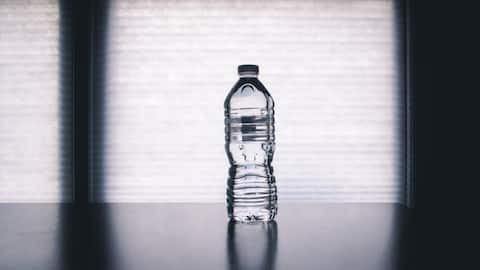Bottled water contains thousands of previously unidentified nanoplastics: Study
What's the story
A recent study has found that bottled water contains significantly more plastic particles than previously estimated, with some particles so small they can't be seen even under a microscope. The research showed that one liter of water, equal to two standard-sized bottled water, contained an average of 240,000 plastic particles from seven types of plastics. A staggering 90% of these particles were identified as nanoplastics, while the remaining 10% were microplastics.
Details
New technology enables detection and analysis of nanoplastics
Scientists from Columbia University have created a new technology that can detect, count, and analyze the chemical structure of nanoparticles in bottled water. The study, published in the journal Proceedings of the National Academy of Sciences, used a powerful optical imaging technology called Stimulated Raman scattering (SRS) microscopy to identify and capture images of nanoparticles. This innovative method has allowed researchers to classify seven types of plastics found in bottled water.
What Next?
Potential risks to human health from nanoplastics
Nanoplastics are particularly concerning for human health, as they can infiltrate individual cells and tissues in major organs, potentially disrupting cellular processes and releasing endocrine-disrupting chemicals. Sherri "Sam" Mason, director of sustainability at Penn State Behrend, explained that these chemicals can travel to the liver, kidney, and brain, and even cross the placental barrier into an unborn child.
Previous data
Previous data findings
Conventional methods, which could only locate microplastics ranging from 5mm down to 1 micrometer, a millionth of a meter, or 1/25,000th of an inch had proven too difficult to use for the detection of nanoplastics. The size of nanoplastic particles is less than one millimeter. In a groundbreaking study from 2018, it was found that a liter of bottled water contained approximately 300 microplastic particles, although the researchers' detection methods were constrained at that time.
Facts
How to reduce exposure to plastics
To reduce exposure to plastic particles, experts recommend drinking tap water from glass or stainless steel containers. Additionally, avoid consuming food and beverages in plastic containers, and wear garments made from natural fabrics, and purchase consumer products made from natural materials. Make sure to analyze your consumption of plastic in your daily life and find alternatives whenever feasible.
